

Damion Smy
Boxy new KGM Musso unveiled to take on HiLux and Ranger ahead of Australian launch
3 Hours Ago
Okay, it's not a car review. But lots of keen drivers are locked inside at the moment, and demand for gaming wheels are through the roof. How does Logitech's latest stack up?
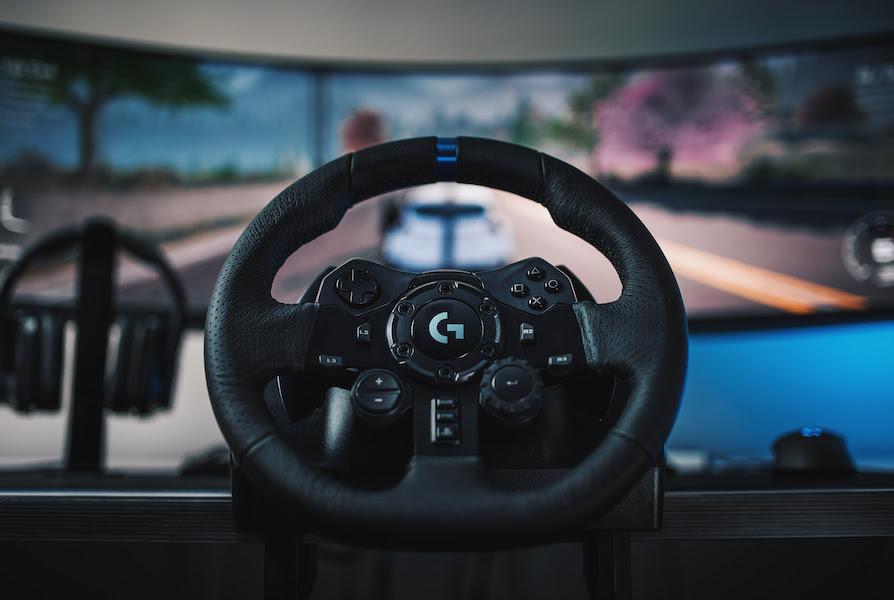
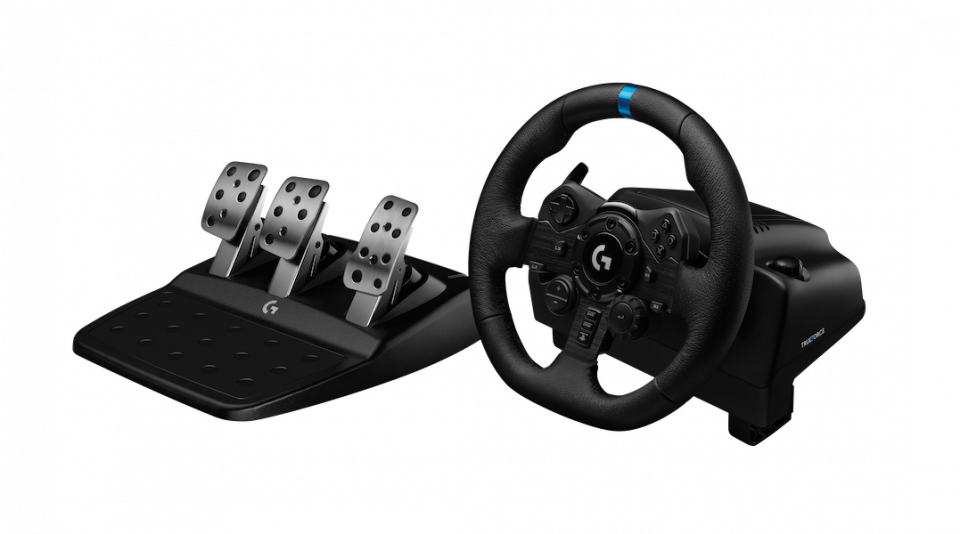

Contributor

Contributor


Contributor

Contributor
Where expert car reviews meet expert car buying – CarExpert gives you trusted advice, personalised service and real savings on your next new car.
Before 2020, the thought of spending any meaningful time in front of a PlayStation wasn’t really on my radar. But COVID-19 has changed a lot of things, including my gaming habits.
After diving back into Gran Turismo Sport, the lure of a wheel very quickly became hard to ignore. The solution to my poor online performance wasn’t me, it was the controller. And the best way to fix that is with a gaming wheel.
Although you can spend upwards of $1500 on a wheel and pedal setup, that seems very steep for what is (for now at least) a hobby.

That’s where Logitech slots in. A bit of internet research revealed the G29 wheel is favoured by a huge array of people, from casual gamers to wannabe sim racers, with a more palatable price tag than what Fanatec has to offer and the allure of a well-known brand name.
Slotting in above the G29 is the G923 on test here. It looks like the G29, with the same design and smattering of buttons protruding from its three-spoke centre, but wears a steeper $599 price tag and packs in a more advanced force feedback system.
It’s actually the first new Logitech gaming wheel in five years.

It also gives Logitech another way to satiate the ravenous demand popping up for racing wheels in 2020. Want the cheapest possible wheel? The G29 is yours.
Fancy yourself a more serious racer, and want the best Logitech has to offer? Step towards the G923, sir.
I was expecting some assembly would be required but setup for the G923 is surprisingly simple. The box is home to a pedal unit and the wheel base/wheel itself, along with a chunky three-pin wall plug, but there are no complex instructions and no software required on the PlayStation 4.

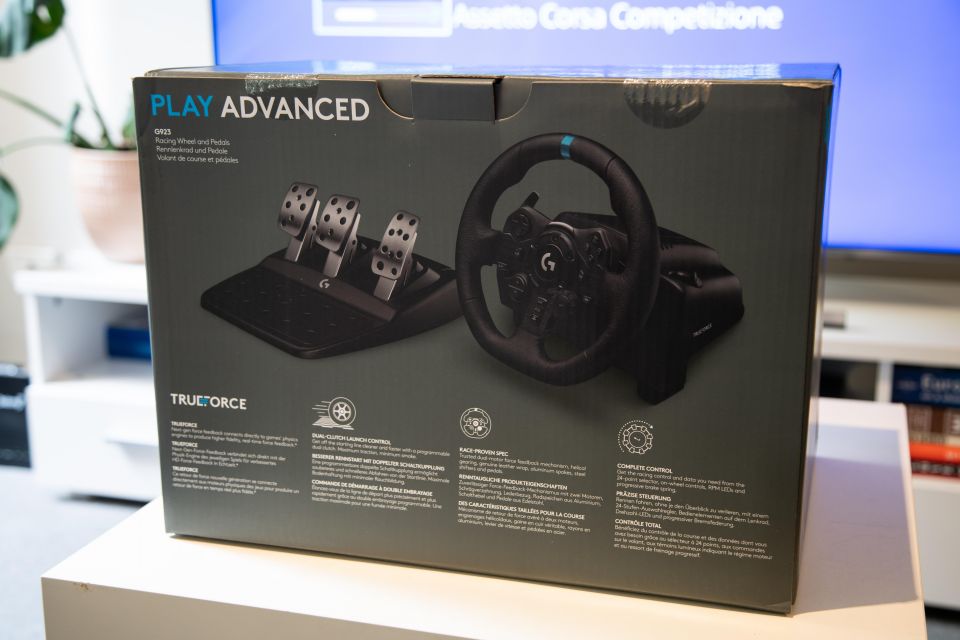
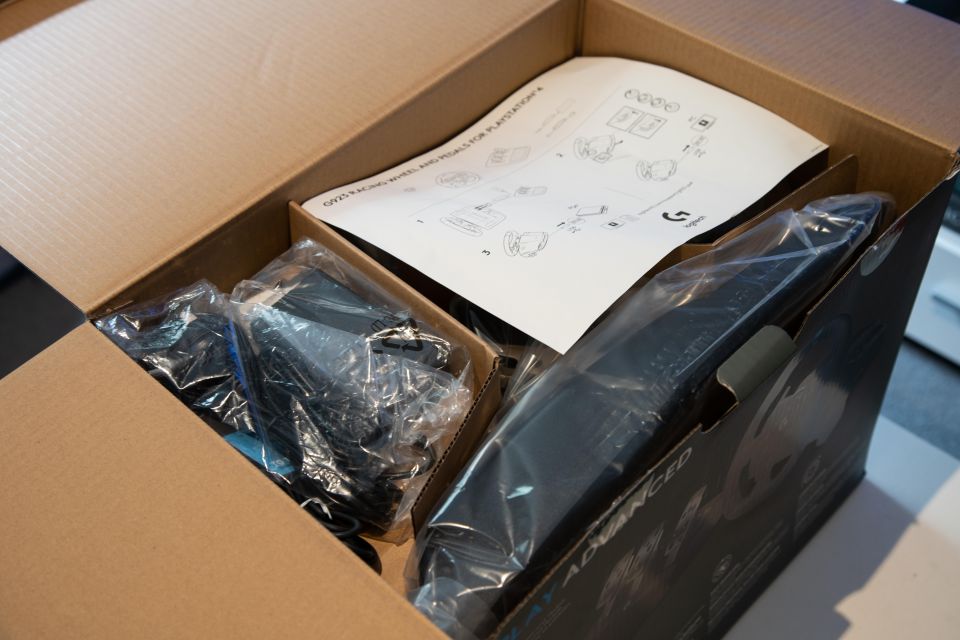
The wheel base is the hub, with connectors for the pedals and power adapter hidden away underneath. The click-in cable routing is a nice touch, especially if you have the luxury of enough space to keep the wheel permanently set up.
Umbilical cords plugged in, it’s a matter of hooking a USB connector into the PlayStation 4, plugging the power adapter into the wall, and getting comfortable. Although it can be screwed into a proper simulator rig, there’s also a pair of simple plastic clamps on the wheel’s underside so it can be attached to a desk or table.
There’s also a set of small pop-out spikes on the base of the pedals to help them grip carpet, which is a nice touch.
I live in a pretty standard two-bedroom apartment, so space is at a bit of a premium. My first idea was to mount the wheel on the small Ikea table holding the box up in these images, but the clamps wouldn’t stretch far enough to grab it.
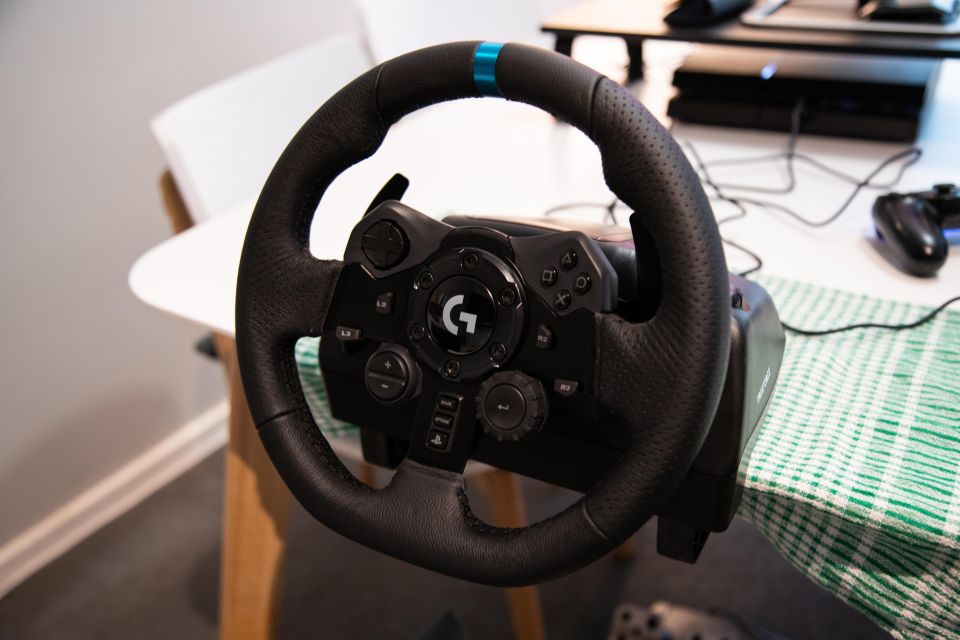
My first solution was to mount it on a dining chair and sit on the floor, but our television isn’t mounted high enough to see over the backrest, which is problematic given the importance of, you know, seeing the screen.
Finally, I settled on moving the PS4 to the kitchen table and plugging it into my computer monitor, mounting the wheel to the table with a bit of protection from a tea towel, and slotting the pedals underneath.
Not the most elegant solution if you need to eat dinner, but surprisingly effective for gaming.
For the full effect of the force feedback, it’s important to make sure the wheel is properly clamped down. No point paying for a pricey wheel if you’re not actually going to enjoy it.
The wheel itself is surprisingly luxurious. It’s trimmed in perforated leather – or something that feels a lot like it – and the spokes are made of real, cold metal. The paddle shifters lack the satisfying click-clack of the real deal, but feel solid and are large enough to reach with a bit of lock wound on.

The G923 is small by real-world standards, akin to the tiller in the Peugeot 208, but it feels surprisingly solid when you properly grasp it. The highest praise we can heap on the whole setup is to say it doesn’t feel like a toy, it feels like a serious piece of equipment.
Logitech’s headline feature for the G923 is something it calls TrueForce Feedback.
“What TrueForce is, it’s like a high-definition version of Force Feedback. It’s next-level feedback,” Daniel Hall, Logitech senior category portfolio manager for the G923, told CarExpert.
“It takes that old [force feedback] communication method, and adds another two different types of input – the first one being a direct connection to the game’s physics engine,” he explained.
“What makes a racing game a simulator is its physics engine. If you’re turning a corner, if you start to get tyre slip it’ll then start to step out on you, and you can catch it, and you can bring it in just like you can in a real racing car. It’s not like you’re driving on a railroad track… that’s what the physics engine does.
“The steering wheel ties directly to the physics engine. So what that’s going to pick up is all those little undulations in the road.”

Along with greater awareness of what’s happening in a straight line, TrueForce is designed to feed small vibrations from the car’s engine through the wheel, and better translate environmental factors like crosswinds to gamers.
Turns out keen real-world drivers aren’t the only ones who want good feedback through the wheel.
It’s immediately noticeable. My first experience of the wheel was in Assetto Corsa Competitzione, behind the wheel of a Lamborghini Huracan GT3, and there was a real sense the V10 was buzzing through the car at idle.
In Gran Turismo Sport the wheel tugs and weaves in your hands over uneven road surfaces, although the engine vibrations weren’t nearly as pronounced.
There are controls for the TrueForce Feedback in each game, so racers can configure its severity. Is it a game-changer? It definitely makes driving feel more immersive, because you’re busier at the wheel more of the time.
Also impressive is the strength of the force feedback. Previous wheels I’ve used have felt too easy to twirl, but with the feedback on the G923 was impressively strong, forcing you to really put your back into snap corrections.
I can’t comment on how it compares to the (significantly) more expensive direct drive wheels from Fanatec and Thrustmaster, but it certainly packs enough of a punch for my use, and it’s not as if the wheel was holding me back.
Any spills, thrills, and crashes – and there were plenty – were 100 per cent down to my ineptitude as a virtual racer, not my hardware. If feels like there’s plenty of headroom to grow with the G923, like I could get much better at online racing and it’d be able to keep up.
All of which begs the question: should you stump for the G923 as an entry point to the world of racing wheels? When the wheel arrived at my house, it wore a $799 price tag. At that point, I would have said no.
TrueForce is nice to have, as is forward compatibility with the PS5 if you’re planning on upgrading immediately, but not necessarily nice enough to justify a $300 jump over the G29 with which it shares its design.
But Logitech has since adjusted the price to just $599, or just $100 more than the G29. At that price, it’s absolutely where my money would be going.
It’s made online racing more fun, and Melbourne’s lockdown more bearable – $100 is a small price to pay for the latest and greatest.
Where expert car reviews meet expert car buying – CarExpert gives you trusted advice, personalised service and real savings on your next new car.
Scott Collie is an automotive journalist based in Melbourne, Australia. Scott studied journalism at RMIT University and, after a lifelong obsession with everything automotive, started covering the car industry shortly afterwards. He has a passion for travel, and is an avid Melbourne Demons supporter.


Damion Smy
3 Hours Ago


Damion Smy
4 Hours Ago


Damion Smy
6 Hours Ago


Damion Smy
7 Hours Ago


Damion Smy
9 Hours Ago


Damion Smy
10 Hours Ago